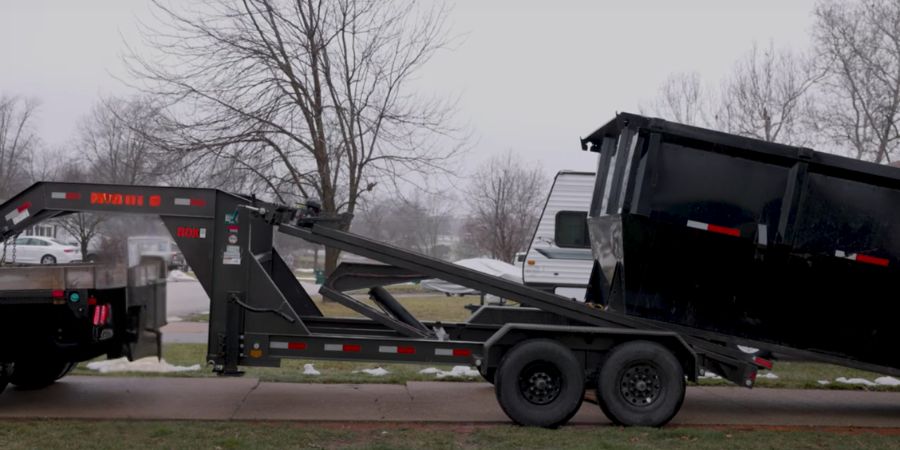
A 30 cubic yard dumpster can hold approximately 30 cubic yards of waste material, which equates to roughly 9-10 pickup truck loads of debris. This substantial capacity makes it ideal for large construction projects, major home renovations, or commercial cleanouts, with the ability to handle between 6-7 tons of material depending on waste type and Des Moines regulations.
Volumetric Capacity of a 30 Yard Dumpster
Understanding the true capacity of a 30 yard container requires consideration of both volume and weight limits. The cubic yardage represents the total interior space available for waste material, but practical capacity often depends on the type of debris being disposed of. Here’s a breakdown of typical capacity measurements:
| Material Type | Approximate Capacity |
|---|---|
| Construction Debris | 6-7 tons |
| Household Waste | 4-5 tons |
| Green Waste | 3-4 tons |
| Mixed Materials | 5-6 tons |
Common Uses and Material Types for 30 Yard Containers
Construction and Demolition Waste
Construction and demolition projects generate significant amounts of waste that can be efficiently managed with a 30 yard container. These dumpsters excel at handling large volumes of mixed construction materials, including drywall, lumber, roofing materials, and concrete debris. The substantial capacity allows for continuous work flow without frequent container switches.
Residential Cleanouts and Renovations
When it comes to major home renovations or complete house cleanouts, a 30 yard dumpster provides ample space for disposing of various materials:
| Project Type | Estimated Material Volume |
|---|---|
| Full House Renovation | 25-30 cubic yards |
| Multiple Room Remodel | 20-25 cubic yards |
| Complete Garage Cleanout | 15-20 cubic yards |
| Large Landscape Project | 25-30 cubic yards |
Commercial and Industrial Applications
The 30 yard container is particularly well-suited for commercial and industrial use, where large volumes of waste need to be managed efficiently. These dumpsters can accommodate manufacturing waste, retail fixtures, office furniture, and other business-related materials while minimizing disruption to daily operations.
Weight Considerations and Load Distribution
Maximum Weight Limits
Understanding weight limits is crucial for proper use of a 30 yard dumpster. Most municipalities and waste management companies set strict weight restrictions to ensure safe transport and disposal. Exceeding these limits can result in additional fees or require partial unloading before transport.
Material Density Factors
Different materials have varying densities, which directly impact how much can be safely loaded into a 30 yard container. Heavy materials like concrete, dirt, or roofing materials may reach weight limits before the container is fully filled, while lighter materials like cardboard or yard waste may fill the entire volume without approaching weight restrictions.
Optimizing Dumpster Usage
Loading Techniques and Strategies
Proper loading techniques can significantly increase the effective capacity of a 30 yard dumpster. Breaking down large items, compacting materials when possible, and maintaining even distribution throughout the container helps maximize available space while ensuring safe transport.
Material Segregation Practices
Separating different types of waste materials can improve efficiency and potentially reduce disposal costs. Recyclable materials should be separated when possible, and hazardous materials must be excluded entirely to comply with regulations.
Environmental Impact and Sustainable Practices
Recycling and Waste Reduction
A 30 yard dumpster rental provides an opportunity to implement sustainable waste management practices. Many materials commonly disposed of in these containers can be recycled or repurposed, reducing environmental impact and potentially lowering disposal costs.
Compliance with Environmental Regulations
Proper use of a 30 yard container includes adherence to local environmental regulations regarding waste disposal. This includes proper separation of hazardous materials and compliance with recycling requirements for certain material types.
Conclusion
A 30 cubic yard dumpster offers substantial capacity for a wide range of projects, from major home renovations to commercial cleanouts. Understanding both volume and weight limitations, along with proper loading techniques and material considerations, ensures optimal use of the container while maintaining compliance with local regulations and environmental requirements.
30 Yard Dumpster FAQs
How many pickup truck loads equal a 30 yard dumpster?
A 30 yard dumpster can hold the equivalent of approximately 9-10 standard pickup truck loads of debris, assuming each truck bed holds roughly 3 cubic yards of material. The exact number may vary depending on the type of material and how efficiently it’s loaded.
What is the maximum height you can fill a 30 yard dumpster?
The maximum fill height for a 30 yard dumpster is typically level with the top rail or slightly below, which is usually 6 feet from the ground. Overfilling beyond this point is not permitted due to transportation safety regulations and potential material spillage.
Can you mix different types of waste in a 30 yard dumpster?
While mixed waste is generally acceptable in 30 yard dumpsters, certain combinations may affect weight limits and disposal costs. It’s important to verify acceptable materials with your rental provider and separate hazardous materials, electronics, and other restricted items.
How long does it take to fill a 30 yard dumpster during a renovation?
The time to fill a 30 yard dumpster during renovation typically ranges from 3-7 days, depending on project scope and crew size. Large demolition phases may fill the container quickly, while finishing work generates waste at a slower rate.
What happens if you exceed the weight limit of a 30 yard dumpster?
Exceeding the weight limit of a 30 yard dumpster typically results in additional fees, charged per ton over the limit. In some cases, you may be required to remove excess weight before the dumpster can be transported, causing project delays and additional costs.